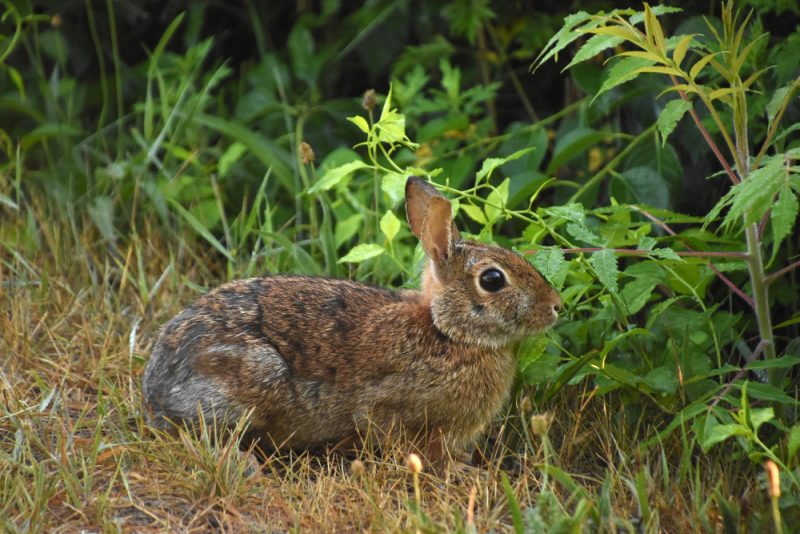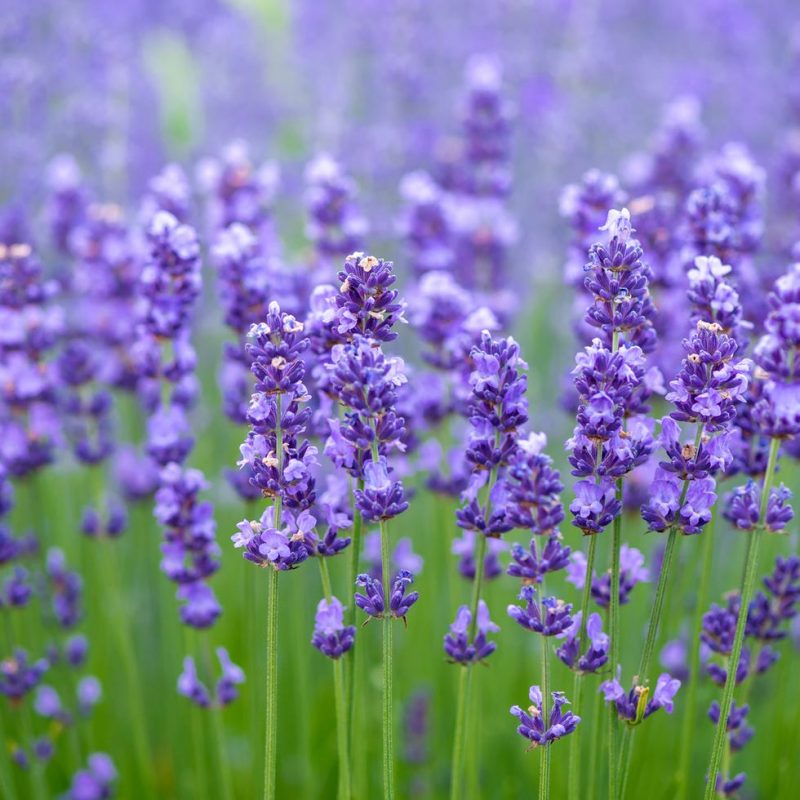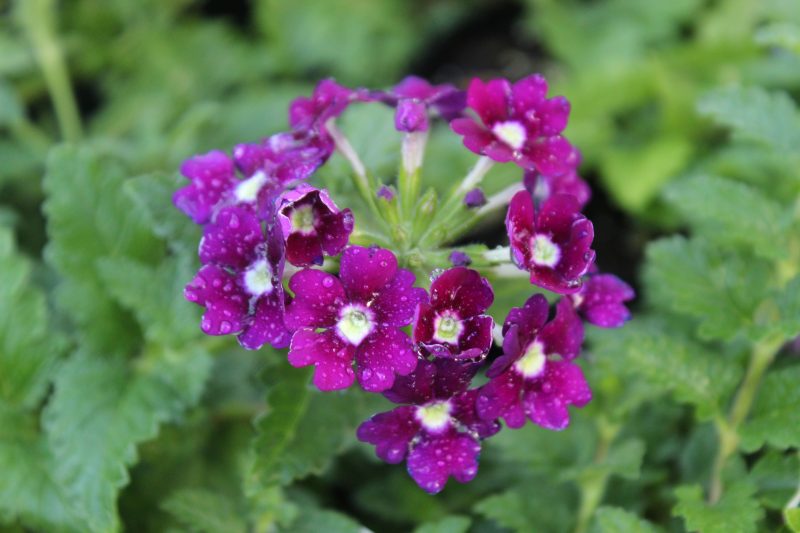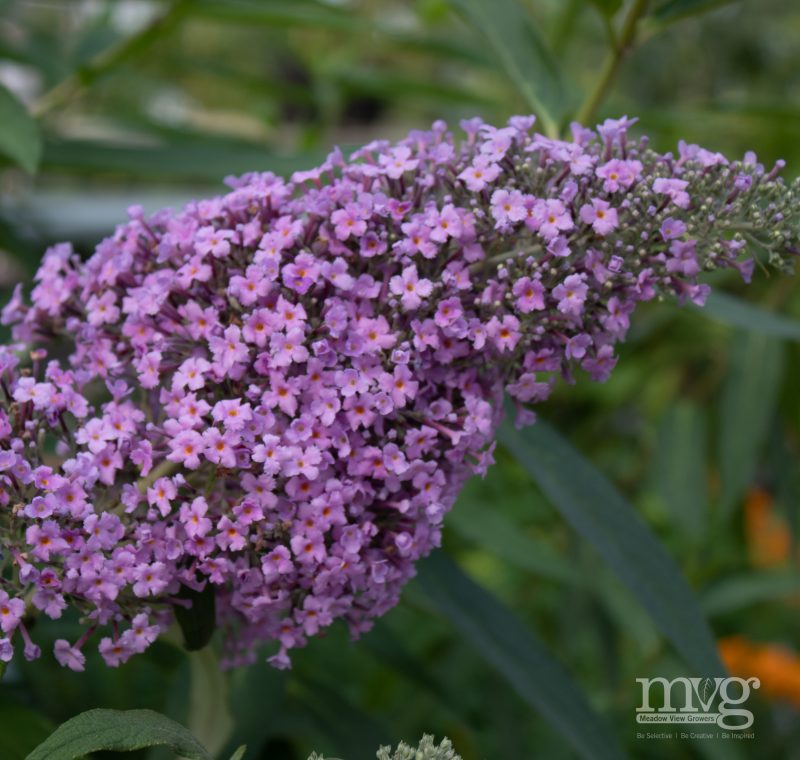

Scents
Interplant aromatic perennial herbs throughout your garden that have scents that deer hate, such as mint, thyme, French tarragon, lavender, chives, sage, and rosemary.
Be Creative, Be Inspired, Be Selective | M-F: 9-6, Sat: 9-5 | 937-845-0093
While you can’t create a 100 percent deer-proof garden, there is a wide voice of deer-resistant plants available to help deter them and minimize any damage.
Whether you are looking for evergreen shrubs to serve as the backbone of your garden scheme, or annuals to fill in gaps in pots and borders, there are some wonderful plants to choose from.
There are no absolutely 100% deer-proof plants. If food is scarce enough, hungry deer have been known to eat almost anything. The heaviest browsing by deer will occur from October through February, especially during difficult winter months

Interplant aromatic perennial herbs throughout your garden that have scents that deer hate, such as mint, thyme, French tarragon, lavender, chives, sage, and rosemary.
Deer love the tender new leaves and shoots of groundcovers when they first emerge in the spring. To eliminate the temptation, treat the area with a strong-smelling deer repellent or something that also doubles as a chemical-free fertilizer, such as blood meal or fish emulsion.
Do not overfertilize, which will result in the soft, succulent vegetative growth that deer love. Just half the recommended dosage at a given time will leave the odor but not overstimulate the plants.


Deer are often frightened away by loud noises and sudden movement. Keep them on edge by hanging wind chimes from the branches of trees and shrubs or by placing wind spinners throughout your garden. If that doesn’t work, try startling them with a sudden spray of water by installing a motion-activated sprinkler.
Trees | Shrubs | Perennials | Perennials (Continued) |
| Acer (Maples) | Berberis (Barberry) | Achillea (Yarrow) | Helleborus (Lenten Rose) |
| Amelanchier (Serviceberry) | Buddleia (Butterfly Bush) | Aconitum(Monkshood) | Iberis (Candy Tuft) |
| Betula (Birch) | Buxus (Boxwood) | Agastache (Hyssop) | Iris |
| Chionanthus (Fringe Tree) | Callicarpa (Beautyberry) | Alchemilla (Lady’s Mantle) | Kniphofia (Red Hot Poker) |
| Crataegus (Hawthorne) | Caryopteris (Blue Mist) | Aquilegia (Columbine) | Lamium (Dead Nettle) |
| Cryptomeria (Japanese Cedar) | Cephalanthus (Button Bush) | Armeria (Sea Thrift) | Lavandula (Lavender) |
| Fagus (Beech) | Cephalotaxus (Jap. Plum Yew) | Artemisia Wormwood) | Leucanthemum (Shasta Daisy) |
| Ginkgo | Chamaecyparis pisifera | Aruncus (Goatsbeard) | Liatris (Dead Nettle) |
| Ilex opaca (American Holly) | Clethra (Summersweet) | Asarum (Ginger) | Ligularia (Golden Ray) |
| Liquidambar (Sweetgum) | Cotinus (Smoke Bush) | Asclepias (Butterfly Weed) | Lobelia (Cardinal Flower) |
| Magnolia | Cotoneaster | Astilbe (False Spirea) | Lupinus (Lupine) |
| Nyssa (Black Gum) | Cytisus (Broom) | Baptisia (False Indigo) | Monarda (Bee Balm) |
| Picea (Spruce) | Daphne | Bergenia (Heartleaf Bergenia) | Nepeta (Catmint) |
| Pinus (Pine) | Deutzia | Brunnera (Siberian Bugloss) | Oenothera (Evening Primrose) |
| Quercus (Oak) | Euonymus a. ‘Compacta’ | Centaurea (Cornflower) | Paeonia (Peony) |
| Salix (Willow) | Forsythia | Centranthus (Red Valerian) | Papaver (Poppy) |
| Thuja plicata (Western Arborvitae) | Hibiscus (Rose-of-Sharon) | Cerastium (Snow in Summer) | Perovskia (Russian Sage) |
| Hypericum (St. John’s Wort) | Ceratostigma (Plumbago) | Penstemon (Beard Tongue) | |
| Itea (Virginia Sweetspire) | Chelone (Turtlehead) | Phlox subulata (Creeping Phlox) | |
| All of the Following: | Juniperus chin., squamata | Cimicifuga (Bugbane) | Polemonium (Jacob’s Ladder) |
| Ferns | Kalmia (Mt. Laurel) | Convallaria (Lily of the Valley) | Primula (Primrose) |
| Grasses | Leucothoe | Coreopsis (Tickseed) | Pulmonaria (Lungwort) |
| Bamboo | Myrica (Bayberry) | Delosperma (Ice Plant) | Rodgersia (Rodger’s Flower) |
| Philadelphus (Mock Orange) | Delphinium (Larkspur) | Salvia (Sage) | |
| Pieris (Andromeda) | Dianthus (Hardy Carnations) | Scabiosa (Pincushion Flower) | |
| Potentilla (Bush Cinquefoil) | Dicentra (Bleeding Heart) | Sedum kamtsch. (Stonecrop) | |
| Prunus laur. (Cherry Laurel) | Digitalis (Foxglove) | Sedum ‘Dragon’s Blood’ | |
| Pyracantha (Firethorn) | Epimedium (Barrenwort) | Solidago (Goldenrod) | |
| Rhododendron x ‘PJM’ | Echinops (Globe Thistle) | Stachys (Lamb’s Ear) | |
| Sarcococca (Sweetbox) | Euphorbia (Spurge) | Tanacetum | |
| Spiraea | Filipendula (Meadowsweet) | Teucrium (Germander) | |
| Syringa (Lilac) | Gaillardia (Blanket Flower) | Thalictrum (Meadow Rue) | |
| Weigela | Gallium (Sweet Woodruff) | Thymus (Thyme) | |
| Yucca | Gaura (Wand Flower) | Tiarella (Foamflower) | |
| Gypsophila (Baby’s Breath) | Veronica (Speedwell) |
You can still have a lush, thriving garden by making smart choices. Many stunning plants are unpalatable to deer because of their poisonous compounds, fuzzy or aromatic leaves, and tough, spiny, or bristly textures. Check out our top picks.
These are reliable plants for summer color, even in the most deer-plagued garden.
Ageratum Floss Flower (Ageratum houstonianum)
Ageratum flowers hail from the Asteraceae family. Like little pompoms in appearance, these blooms prefer warmer climates. They may be annuals in some areas but perennials in very warm and tropical areas. Deer tend to avoid ageratum in their diets.
Begonias (wax)
Look for begonias with fuzzy or waxy stems to find those that are most resistant to deer. Not all begonias are deer-proof, but you may have luck with these. Gardeners tend to grow begonias as annuals outdoors and sometimes as houseplants, overwintering indoors.
Caladium – Elephant Ears
This lovely, brightly-colored flower produces a toxin, oxalate / oxalic acid, which may turn off deer from trying to eat it. Some gardeners report deer nibbling their caladium plants. Your mileage may vary.
Cleome Spider Flower
Cleome spider flowers tower as high as five feet in height. These flowers grow mostly as annuals and have thorny stems that tend to turn away the deer.
Cosmos sulphureus
The orange cosmos in particular may be a bit more resistant to deer.
Dahlias
Dahlias may be grown as annuals or dug up for overwintering dahlia tubers, depending on your preference. While not totally deer-proof, dahlias generally are not a favorite food for deer. That being said, we’ve witnessed our dahlias munched to the ground by either rabbits or the resident groundhog. Use caution and consider planting away from areas of high wildlife traffic just in case.
Dusty Miller
Also known as Silverdust, Dusty Miller is unattractive to deer. They tend to avoid the silvery, lacy leaves and most likely will avoid other higher value plants planted nearby.
Four O’Clocks (Mirabilis jalapa)
Four o’clocks grow nicely in just about any garden space, readily reseeding themselves for the next growing season. Their root can be saved for next year, but most of the time they’re grown as annuals. In my experience, bunnies, groundhogs, and deer leave four o’clocks alone.
Lantana
Due to their strong scent and rough leaf texture, lantanas tend to be fairly safe from deer. The odor of lantana plants is so strong that sometimes it can even bother gardeners and homeowners a bit. It’s no wonder the deer usually leave these alone!
Nasturtium
Popular as a beneficial planting companion in the garden, nasturtium also proves to be fairly pest resistant. The peppery taste and scent of nasturtium generally ward off deer.
Marigolds
All varieties of marigolds are a turnoff for deer because of their strong, pungent scent. However, signet marigolds have a lighter citrusy smell and flavor, making them popular for culinary use.
Persian Shield (Strobilanthes)
This unique plant grows as an annual or may work indoors as a houseplant. According to Wisconsin Horticulture (Division of Extension), Persian shield is generally regarded as deer resistant.
Polka-dot plant
The vibrant, patterned leaves of the polka dot plant look stunning in borders or containers. They’re also a fairly resistant flower to deer. It’s listed as non-invasive, non-aggressive, and deer resistant, according to Cornell University.
Pot Marigold – Calendula
Deer don’t like the taste of calendula generally, so you may luck out with this deer-resistant annual plant. Give it a whirl and see how it goes.
Rudbeckia hirta – Annual Black-Eyed Susan
Lovely in the garden or as cut flowers, Annual Black-Eyed Susan Rudbeckia hirta works well as a deer-deterrent annual. The hairs on the black-eyed Susans make them unappealing to deer, who will likely opt for a totally different plant.
Shirley Poppy
Accepted as somewhat toxic to deer, poppies tend to be another good choice for deer-resistant annuals. Keep in mind that poppies may be toxic to the kids and pets in your household as well.
Snapdragons
Although beautiful and usually brightly colored, snapdragons tend not to be a favorite food for deer. They’ll generally leave your snapdragon plants alone, making these a fine deer-resistant plant option.
Strawflower (Helichrysum)
With papery petals in the same texture as onion skin, strawflowers are unappetizing to deer. The deer may not love the flowers’ texture, leaving them alone in most cases. These unique flowers are still gorgeous to grow as a breathtaking annual in the garden.
Sweet Alyssum
Low-growing and adorable with tons of tiny blooms, sweet alyssum is a popular deer-resistant annual to consider for your garden, mailbox area, or other landscaping space. Consider a border of alyssum around your flower beds to discourage the deer.
Zinnias
Zinnias are touted as a deer-proof annual as most times the deer will leave them alone. The bright, prolific blooms of these drought-tolerant flowers reward busy gardeners time and time again.
Zonal Geranium
Geraniums are widely believed to be pest-resistant in general. The zonal geranium emits a smell and the leaves have a texture that deer find offensive. Use this to your advantage by companion planting with geraniums.
Complements of Bunny’s Garden www.bunnysgarden.com/deer-resistant-annuals
| Cookie | Duration | Description |
|---|---|---|
| cookielawinfo-checkbox-analytics | 11 months | This cookie is set by GDPR Cookie Consent plugin. The cookie is used to store the user consent for the cookies in the category "Analytics". |
| cookielawinfo-checkbox-functional | 11 months | The cookie is set by GDPR cookie consent to record the user consent for the cookies in the category "Functional". |
| cookielawinfo-checkbox-necessary | 11 months | This cookie is set by GDPR Cookie Consent plugin. The cookies is used to store the user consent for the cookies in the category "Necessary". |
| cookielawinfo-checkbox-others | 11 months | This cookie is set by GDPR Cookie Consent plugin. The cookie is used to store the user consent for the cookies in the category "Other. |
| cookielawinfo-checkbox-performance | 11 months | This cookie is set by GDPR Cookie Consent plugin. The cookie is used to store the user consent for the cookies in the category "Performance". |
| viewed_cookie_policy | 11 months | The cookie is set by the GDPR Cookie Consent plugin and is used to store whether or not user has consented to the use of cookies. It does not store any personal data. |